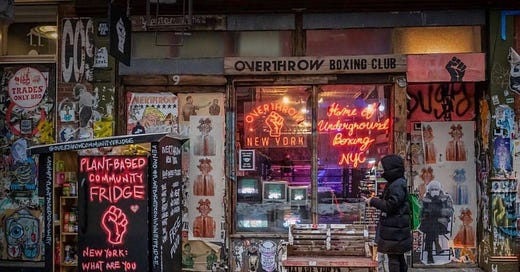Food: From Biological Necessity to Commodity, and Back Again?
An introduction on the rise in community fridges and urban agriculture.
Food is a biological necessity, yet exists as a commodity. Groceries consistently accrue large portions of people’s typical spending habits, regardless of socioeconomic status. However, the quality and nutrition of these items vary significantly based on where a consumer lives and their socioeconomic status. Food apartheid exacerbates the extremity of this issue, as many people cannot buy nutritious and healthy food options.
However, there has been work done to combat the issue in recent years. Community fridges have begun to materialize in cities around the country, including ones with significant amounts of food insecurity such as Boston and New York City. These fridges are exemplary of mutual aid, as there is not an obvious “giver” and “taker” in this scenario. Miami-Dade County’s community fridges have the unofficial motto of “take what you need, leave what you can”. Freedge serves as a database outlining all of the community fridges across the country; at the beginning of the COVID-19 pandemic, there were only 12 nationally. Today, there are 160 fridges across the country.
Atlanta, GA has planted their first Community Urban Food Forest, as well as a new model of the City of Atlanta park, designed to produce a variety of healthy food options such as nuts, fruits, vegetables, herbs, and mushrooms free for public consumption. This food forest is located in a federally delegated “food desert”, meaning that the community has a lack of access to nutritious food. This solution not only provides the community with fresh food, but also supports botanical growth and helps to limit air pollution.
By placing this Food Forest and community fridges in the center of food deserts, the barriers to accessing fresh food are lowered. This is vital, as many individuals who live in these communities do not have stable or consistent access to transportation. Placing the fridges within walking distance is helpful. I hope that these fridges continue to gain traction around the country, as 12.8% of the U.S. population is living in a federally designated food desert.
While there have been glimmers of hope for federal policy change, until those changes occur, it is all the more important to invest in local communities and consider ways to give back to those around us. Find your local community fridge and drop off the unopened bag of pretzels that’s been sitting in your cabinet, or pick up an extra box of pasta at the grocery store.






